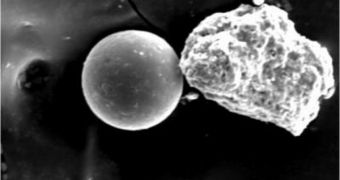It would appear that the same pollution particles that wreak havoc in our bodies also have adverse effects on plants. Scientists have recently discovered that emission particles that lay on tree leaves leave behind a small trace of magnetism in the plants. The phenomenon is more clearly visible in urban areas, where more pollution exists, and especially around highways. In the countryside, where less vehicles roam the streets, the peculiar trait can barely be registered, LiveScience reports.
Investigators believe that monitoring the level of magnetism in tree leaves could be an easy and inexpensive way of keeping tabs on pollution levels all around the world. The magnetism trait was first identified in Europe a few years ago, when researchers noticed that particulate matter stuck to the leaves of trees that were planted in industrial areas. These regions, around any major city, are by definition highly polluted with all kinds of substances.
Though there are numerous chemical compounds that can deteriorate the environment and our health, the one considered to be mostly responsible for leaf magnetism is iron oxide, a byproduct of diesel engines, although other sources produce it in abundance as well. Metallic pollutants in general can instill the effect in leaves, the research team reported last weekend at the meeting of the Geological Society of America. In charge of the investigation was geophysicist Bernie Housen, an expert at the Western Washington University, in Bellingham, Washington.
The reason why it's so easy for these particles to become trapped on the surface of the leaves is the latter's external structure. While they may seem smooth at the surface, microscope analysis easily reveals an irregular structure, which traps emission particles in the grooves on the surface. In his investigations, Housen set out to discover whether the European research results applied to the United States as well. He indeed found the same phenomenon on leaves and trees in the city of Bellingham.
The expert highlighted the importance of keeping track of particulate matter in the air. He revealed that these fine particles were able to infiltrate our bodies with extreme ease, especially through the mouth and nose, when we breathe. Once in the lungs, they can cause severe pulmonary diseases, and can also clog the respiratory pathways, leading to slow suffocation. They can trigger the formation of lung cancer too, and, as such, their levels need to be kept under control. And if a simple leaf magnetism measurement can do that, why not?

 14 DAY TRIAL //
14 DAY TRIAL //